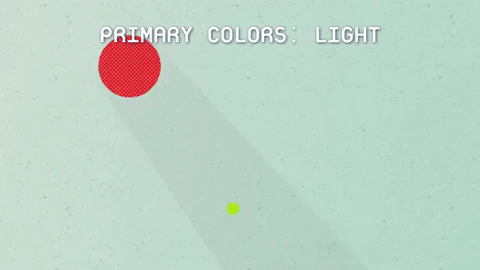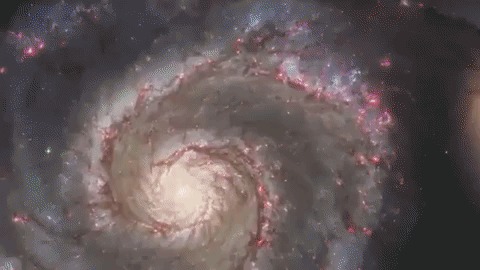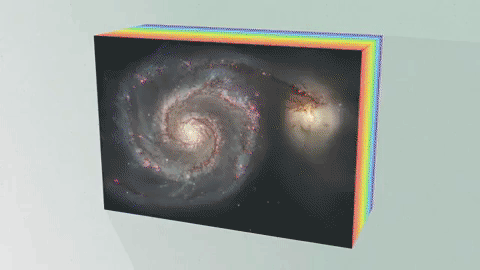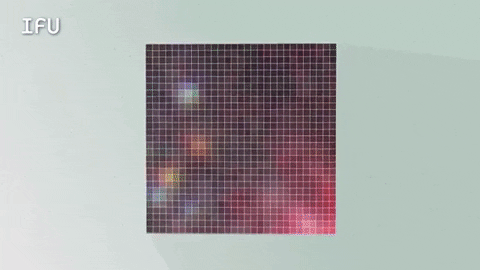Chris Williams

Chris Williams
Born in New York City, Chris Williams considers Potomac, Maryland, to be his hometown. A private pilot and Eagle Scout, Williams is a board-certified medical physicist and holds a doctorate in physics from MIT. https://go.nasa.gov/49YJJmf
Make sure to follow us on Tumblr for your regular dose of space!
More Posts from Nasa and Others

One Giant Leap for Mankind
Millions of people around the globe will come together for the Paris 2024 Olympic Games later this month to witness a grand event—the culmination of years of training and preparation.
Fifty-five years ago this July, the world was watching as a different history-changing event was unfolding: the Apollo 11 mission was landing humans on the surface of another world for the first time. An estimated 650 million people watched on TV as Neil Armstrong reached the bottom of the ladder of the lunar module on July 20, 1969, and spoke the words, “That’s one small step for [a] man, one giant leap for mankind.”
While the quest to land astronauts on the Moon was born from the space race with the Soviet Union during the Cold War, this moment was an achievement for the whole of humanity. To mark the world-embracing nature of the Moon landing, several tokens of world peace were left on the Moon during the astronauts’ moonwalk.

“We came in peace for all mankind”
These words, as well as drawings of Earth’s western and eastern hemispheres, are etched on a metal plaque affixed to a leg of the Apollo 11 lunar lander. Because the base of the lander remained on the Moon after the astronauts returned, it is still there today as a permanent memorial of the historic landing.

Microscopic messages from kings, queens, and presidents
Another artifact left on the Moon by the Apollo 11 astronauts is a small silicon disc etched with goodwill messages from leaders of 74 countries around the world. Each message was reduced to be smaller than the head of a pin and micro-etched on a disc roughly 1.5 inches (3.8 cm) in diameter. Thailand’s message, translated into English, reads: "The Thai people rejoice in and support this historic achievement of Earth men, as a step towards Universal peace."
Curious to read what else was inscribed on the disk? Read the messages.

An ancient symbol
The olive branch, a symbol of peace and conciliation in ancient Greek mythology, also found its way to the Moon in July 1969. This small olive branch made of gold was left on the lunar surface during Neil Armstrong and Buzz Aldrin’s 2.5-hour moonwalk. The olive branch also featured on the Apollo 11 mission patches sewed on the crew’s spacesuits. Designed in part by command module pilot Michael Collins, the insignia shows a bald eagle landing on the Moon holding an olive branch in its talons.

We go together
As NASA’s Artemis program prepares to again land astronauts on the Moon, including the first woman and the first person of color, this time we’re collaborating with commercial and international partners. Together we will make new scientific discoveries, establish the first long-term presence on the Moon, and inspire a new generation of explorers.
Is aerospace history your cup of tea? Be sure to check out more from NASA’s past at www.nasa.gov/history.
Make sure to follow us on Tumblr for your regular dose of space!
Space Missions Come Together in Colorado
Our leadership hit the road to visit our commercial partners Lockheed Martin, Sierra Nevada Corp. and Ball Aerospace in Colorado. They were able to check the status of flight hardware, mission operations and even test virtual reality simulations that help these companies build spacecraft parts.
Let’s take a look at all the cool technology they got to see…
Lockheed Martin
Lockheed Martin is the prime contractor building our Orion crew vehicle, the only spacecraft designed to take humans into deep space farther than they’ve ever gone before.

Acting NASA Deputy Administrator Lesa Roe and Acting NASA Administrator Robert Lightfoot are seen inside the CHIL…the Collaborative Human Immersive Laboratory at Lockheed Martin Space Systems in Littleton, Colo. Lockheed Martin’s CHIL enables collaboration between spacecraft design and manufacturing teams before physically producing hardware.

Cool shades! The ability to visualize engineering designs in virtual reality offers tremendous savings in time and money compared to using physical prototypes. Technicians can practice how to assemble and install components, the shop floor can validate tooling and work platform designs, and engineers can visualize performance characteristics like thermal, stress and aerodynamics, just like they are looking at the real thing.

This heat shield, which was used as a test article for the Mars Curiosity Rover, will now be used as the flight heat shield for the Mars 2020 rover mission.
Fun fact: Lockheed Martin has built every Mars heat shield and aeroshell for us since the Viking missions in 1976.

Here you can see Lockheed Martin’s Mission Support Area. Engineers in this room support six of our robotic planetary spacecraft: Mars Odyssey, Mars Reconnaissance Orbiter, MAVEN, Juno, OSIRIS-REx and Spitzer, which recently revealed the first known system of seven Earth-size planets around a single star, TRAPPIST-1. They work with NASA centers and the mission science teams to develop and send commands and monitor the health of the spacecraft.
See all the pictures from the Lockheed Martin visit HERE.
Sierra Nevada Corporation
Next, Lightfoot and Roe went to Sierra Nevada Corporation in Louisville, Colo. to get an update about its Dream Chaser vehicle. This spacecraft will take cargo to and from the International Space Station as part of our commercial cargo program.

Here, Sierra Nevada Corporation’s Vice President of Space Exploration Systems Steve Lindsey (who is also a former test pilot and astronaut!) speaks with Lightfoot and Roe about the Dream Chaser Space System simulator.

Lightfoot climbed inside the Dream Chaser simulator where he “flew” the crew version of the spacecraft to a safe landing. This mock-up facility enables approach-and-landing simulations as well as other real-life situations.

See all the images from the Sierra Nevada visit HERE.
Ball Aerospace
Lightfoot and Roe went over to Ball Aerospace to tour its facility. Ball is another one of our commercial aerospace partners and helps builds instruments that are on NASA spacecraft throughout the universe, including the Hubble Space Telescope and the New Horizons mission to Pluto. Ball designed and built the advanced optical technology and lightweight mirror system that will enable the James Webb Space Telescope to look 13.5 billion years back in time.

Looking into the clean room at Ball Aerospace’s facility in Boulder, Colo., the team can see the Ozone Mapping Profiler Suite. These sensors are used on spacecraft to track ozone measurements.

Here, the group stands in front of a thermal vacuum chamber used to test satellite optics. The Operation Land Imager-2 is being built for Landsat 9, a collaboration between NASA and the U.S. Geological Survey that will continue the Landsat Program’s 40-year data record monitoring the Earth’s landscapes from space.
See all the pictures from the Ball Aerospace visit HERE.
We recently marked a decade since a new era began in commercial spaceflight development for low-Earth orbit transportation. We inked agreements in 2006 to develop rockets and spacecraft capable of carrying cargo such as experiments and supplies to and from the International Space Station. Learn more about commercial space HERE.
Make sure to follow us on Tumblr for your regular dose of space: http://nasa.tumblr.com

Thanks for all of the great questions! Follow me at @Astro_Jeanette on Twitter and @Jeanette.Epps on Instagram, and follow the International Space Station on Twitter, Facebook, and Instagram as I prepare for my mission next year.
How often do solar eclipses occur on other planets like Mars or Venus?
Venus doesn’t have a moon so it never has an eclipse. Mars does have a partial eclipse or a transit of one of its moon and you can see photos at https://www.jpl.nasa.gov/news/news.php?feature=3888
How Do Space Telescopes Break Down Light?
Space telescopes like Hubble and our upcoming James Webb Space Telescope use light not only to create images, but can also break light down into individual colors (or wavelengths). Studying light this way can give us a lot of detail about the object that emitted that light. For example, studying the components of the light from exoplanets can tell us about its atmosphere’s color, chemical makeup, and temperature. How does this work?
Remember the primary colors you learned about in elementary school?
Those colors are known as the pigment or subtractive colors. Every other color is some combination of the primary colors: red, yellow, and blue.

Light also has its own primary colors, and they work in a similar way. These colors are known as additive or light colors.

TVs make use of light’s colors to create the pictures we see. Each pixel of a TV screen contains some amount of red, green and blue light. The amount of each light determines the overall color of the pixel. So, each color on the TV comes from a combination of the primary colors of light: red, green and blue.

Space telescope images of celestial objects are also a combination of the colors of light.

Every pixel that is collected can be broken down into its base colors. To learn even more, astronomers break the red, green and blue light down into even smaller sections called wavelengths.
This breakdown is called a spectrum.

With the right technology, every pixel of light can also be measured as a spectrum.

Images show us the big picture, while a spectrum reveals finer details. Astronomers use spectra to learn things like what molecules are in planet atmospheres and distant galaxies.

An Integral Field Unit, or IFU, is a special tool on the James Webb Space Telescope that captures images and spectra at the same time.

The IFU creates a unique spectrum for each pixel of the image the telescope is capturing, providing scientists with an enormous amount of valuable, detailed data. So, with an IFU we can get an image, many spectra and a better understanding of our universe.
Watch the full video where this method of learning about planetary atmospheres is explained:
The James Webb Space Telescope is our upcoming infrared space observatory, which will launch in 2021. It will spy the first galaxies that formed in the universe and shed light on how galaxies evolve, how stars and planetary systems are born and tell us about potentially habitable planets around other stars.
To learn more about NASA’s James Webb Space Telescope, visit the website, or follow the mission on Facebook, Twitter and Instagram.
Text and graphics credit: Space Telescope Science Institute
Make sure to follow us on Tumblr for your regular dose of space: http://nasa.tumblr.com.
What’s Up for September 2016

We won’t have a solar eclipse until Aug. 21, 2017, but observers in central Africa will see an annular eclipse, where the moon covers most but not all of the sun, on Sept. 1. Observers always need to use safe solar eclipse glasses or filters on telescopes, binoculars and cameras.

Also this month, there are two minor meteor showers, both with about 5 swift and bright meteors per hour at their peak, which will be near dawn. The first is the Aurigid shower on Sept. 1. The new moon on the first means the sky will be nice and dark for the Aurigids.

The second shower is the Epsilon Perseids on Sept. 9. The first quarter moon sets on the 9th at midnight, just in time for the best viewing of the Perseids.

There are many nice pair-ups between the moon and planets this month. You can see the moon between Venus and Jupiter on Sept. 2, and above Venus on the 3rd, right after sunset low on the West-Southwest horizon. On the 15th the nearly full moon pairs up with Neptune, two weeks after its opposition, when the 8th planet is closest to Earth in its orbit around the sun.
Watch the full September “What’s Up” video for more:
Make sure to follow us on Tumblr for your regular dose of space: http://nasa.tumblr.com.
Photos of the eclipse are okay and just as neat to look at? Will NASA post to twitter. Will the Space station take photos also?
Yes, we will be posting a ton of photos and you can add to them as well! https://www.flickr.com/groups/nasa-eclipse2017/ I agree, the photos are incredibly cool!

Labor Day reflections: the Nancy Grace Roman Space Telescope’s primary mirror reflects an American flag hanging overhead. The mirror, which will collect and focus light from cosmic objects near and far, has been completed. Renamed after our first chief astronomer and "Mother of Hubble," the Roman Space Telescope will capture stunning space vistas with a field of view 100 times greater than Hubble Space Telescope images. The spacecraft will study the universe using infrared light, which human eyes can’t detect without assistance. This Labor Day, we thank all the people who work to advance the future for humanity. Credit: L3Harris Technologies Make sure to follow us on Tumblr for your regular dose of space: http://nasa.tumblr.com
Solar System: Things To Know This Week
Weather permitting, you can observe the Moon most nights, unless it's a new moon, when the lighted side of the Moon faces away from Earth. The Moon is by far the brightest object in the night sky and there's plenty to see. But this week is special...

...October 28 is International Observe the Moon Night (also known as InOMN).
Here's all you need to know to join in and celebrate:
1. One Planet. One Moon. One Night.

Everyone on Earth is invited to join the celebration by hosting or attending an InOMN event and uniting on one day each year to look at and learn about the Moon together.
2. What's Up?

October's night skies are full of sights, from the first quarter Moon on InOMN to Saturn making a cameo appearance above the Moon October 23 and 24. Watch our What's Up video for details.
3. Be Social

Hundreds of events are planned around the globe. Click the top link on this page for a handy map. You can also register your own event.
4. Don't Just Stand There

Here are some activities for enhanced Moon watching.
5. Impress Your Friends with Moon Knowledge

Download InOMN flyers and handouts, Moon maps and even some pre-made presentations. There's even a certificate to mark your participation.
6. Guide to the Face of the Moon

Almost dead center on the Earth-facing side of the Moon is the Surveyor 6 robotic spacecraft impact side. Apollo 12 and 14 are a bit to the left. And Apollo 11 - the first steps on the moon - are to the right. This retro graphic tells the whole story.
7. Moon Shots

NASA photographers have done some exceptional work capturing views of the Moon from Earth. Here are a few galleries:
You can't have a solar eclipse without the Moon.
The 2016 "Supermoon" was pretty spectacular.
The Moon gets eclipsed, too.
That IS a Moon - AND the International Space Station.
The Moon is always a great photo subject.
Some spooky shots of the 2014 "Supermoon."
And 2013.
Tips from a NASA pro for photographing the Moon.
8. Walking on the Moon

Twelve human beings walked on the face of the Moon. Here are some of the best shots from the Apollo program.
9. Moon Watch

Our Lunar Reconnaissance Orbiter is up there right now, mapping the moon and capturing some spectacular high-resolution shots.
10. Keep Exploring

Make our Moon portal your base for further lunar exploration.
Check out the full version of ‘Ten Things to Know This Week’ HERE.
Make sure to follow us on Tumblr for your regular dose of space: http://nasa.tumblr.com.

Launch Your Creativity with Space Crafts!
In honor of the completion of our Nancy Grace Roman Space Telescope’s spacecraft — the vehicle that will maneuver the observatory to its place in space and enable it to function once there — we’re bringing you a space craft you can complete at home! Join us for a journey across the cosmos, starting right in your own pantry.
Stardust Slime
Ingredients:
1 5 oz. bottle clear glue
½ tablespoon baking soda
Food coloring
1 tablespoon contact lens solution
1 tablespoon glitter
Directions:
Pour the glue into a bowl.
Mix in the baking soda.
Add food coloring (we recommend blue, purple, black, or a combination).
Add contact lens solution and use your hands to work it through the slime. It will initially be very sticky! You can add a little extra contact lens solution to make it firmer and less goopy.
Add glitter a teaspoon at a time, using as much or as little as you like!
Did you know that most of your household ingredients are made of stardust? And so are you! Nearly every naturally occurring element was forged by living or dying stars.
Take the baking soda in this slime recipe, for example. It’s made up of sodium, hydrogen, carbon, and oxygen. The hydrogen was made during the big bang, right at the start of the universe. But the other three elements were created by dying stars. So when you show your friends your space-y slime, you can tell them it’s literally made of stardust!
Still feeling crafty? Try your hand at more pantry projects or these 3D and paper spacecraft models. If you’re eager for a more advanced space craft, check out these embroidery creations for inspiration! Or if you’re ready for a break, take a virtual tour of an interactive version of the Roman Space Telescope here.
Make sure to follow us on Tumblr for your regular dose of space!
-
 mummifiedraven liked this · 1 month ago
mummifiedraven liked this · 1 month ago -
 mulberryhill liked this · 2 months ago
mulberryhill liked this · 2 months ago -
 ltjgbillybadass liked this · 3 months ago
ltjgbillybadass liked this · 3 months ago -
 asvionyaa liked this · 5 months ago
asvionyaa liked this · 5 months ago -
 aczhang777 liked this · 5 months ago
aczhang777 liked this · 5 months ago -
 mosquotart liked this · 5 months ago
mosquotart liked this · 5 months ago -
 bigbromelvin liked this · 6 months ago
bigbromelvin liked this · 6 months ago -
 hatfish liked this · 7 months ago
hatfish liked this · 7 months ago -
 muckraker169 liked this · 7 months ago
muckraker169 liked this · 7 months ago -
 muckraker169 reblogged this · 7 months ago
muckraker169 reblogged this · 7 months ago -
 anamariaurrutia reblogged this · 7 months ago
anamariaurrutia reblogged this · 7 months ago -
 anamariaurrutia liked this · 7 months ago
anamariaurrutia liked this · 7 months ago -
 discopunkt reblogged this · 8 months ago
discopunkt reblogged this · 8 months ago -
 theronhawke liked this · 8 months ago
theronhawke liked this · 8 months ago -
 arkosetreasure liked this · 8 months ago
arkosetreasure liked this · 8 months ago -
 perdimiscalcetines liked this · 8 months ago
perdimiscalcetines liked this · 8 months ago -
 missy-the-weeb liked this · 9 months ago
missy-the-weeb liked this · 9 months ago -
 entityethereal liked this · 9 months ago
entityethereal liked this · 9 months ago -
 maxxlife32 liked this · 9 months ago
maxxlife32 liked this · 9 months ago -
 black--and--beautiful liked this · 9 months ago
black--and--beautiful liked this · 9 months ago -
 emilyverobalhoudongotto reblogged this · 9 months ago
emilyverobalhoudongotto reblogged this · 9 months ago -
 emilyverobalhoudongotto liked this · 9 months ago
emilyverobalhoudongotto liked this · 9 months ago -
 ngoumapulcherie reblogged this · 9 months ago
ngoumapulcherie reblogged this · 9 months ago -
 ngoumapulcherie liked this · 9 months ago
ngoumapulcherie liked this · 9 months ago -
 i-made-the-sky-purple liked this · 10 months ago
i-made-the-sky-purple liked this · 10 months ago -
 peyman-akbari liked this · 10 months ago
peyman-akbari liked this · 10 months ago -
 delightfulchopshopparadise liked this · 10 months ago
delightfulchopshopparadise liked this · 10 months ago -
 tstiun liked this · 10 months ago
tstiun liked this · 10 months ago -
 willowssgardenn liked this · 10 months ago
willowssgardenn liked this · 10 months ago -
 killerpinkwale liked this · 10 months ago
killerpinkwale liked this · 10 months ago -
 ztevens liked this · 11 months ago
ztevens liked this · 11 months ago -
 autumnhasanxiety reblogged this · 11 months ago
autumnhasanxiety reblogged this · 11 months ago -
 autumnhasanxiety liked this · 11 months ago
autumnhasanxiety liked this · 11 months ago -
 gordonslefthand liked this · 11 months ago
gordonslefthand liked this · 11 months ago -
 leptoquark3 reblogged this · 11 months ago
leptoquark3 reblogged this · 11 months ago -
 leptoquark3 liked this · 11 months ago
leptoquark3 liked this · 11 months ago -
 snappydressersstuff liked this · 11 months ago
snappydressersstuff liked this · 11 months ago -
 thechezzking liked this · 11 months ago
thechezzking liked this · 11 months ago -
 talesofruby01 liked this · 11 months ago
talesofruby01 liked this · 11 months ago -
 strangetidalwaveprince liked this · 11 months ago
strangetidalwaveprince liked this · 11 months ago -
 nuttin87 liked this · 11 months ago
nuttin87 liked this · 11 months ago -
 spurance484 liked this · 11 months ago
spurance484 liked this · 11 months ago
Explore the universe and discover our home planet with the official NASA Tumblr account
1K posts